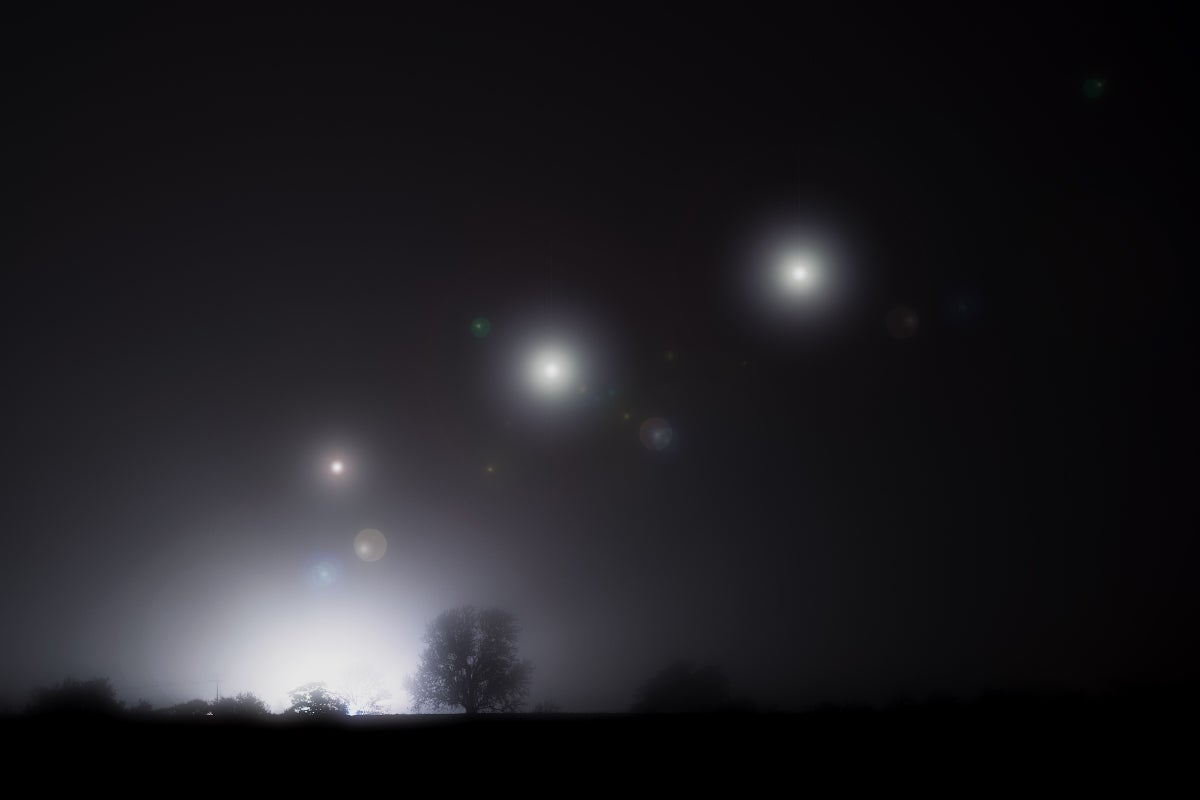In October 2025, new peer-reviewed research published in prominent scientific journals has reignited interest and debate over mysterious flashes of light recorded in the night sky nearly 70 years ago. These unusual patterns, first detected in data from the Palomar Sky Survey conducted between 1949 and 1958, have been linked by some researchers to potential artificial objects orbiting Earth long before the dawn of the space age. However, while these findings have intrigued UFO enthusiasts eager for scientific validation of extraterrestrial visitors, many experts urge caution, pointing to a range of more conventional explanations grounded in atmospheric physics, astronomical phenomena, and the quirks of photographic technology.
The research at the center of this renewed conversation was led by Beatriz Villarroel, an astronomer and theoretical physicist at the Nordic Institute for Theoretical Physics in Sweden. Her team analyzed digitized images from the Palomar Sky Survey, which used photographic plates—glass sheets coated with light-sensitive chemicals—to capture detailed pictures of the night sky. This method was standard before the widespread adoption of digital cameras decades later. The survey utilized the 1.2-meter Palomar Schmidt telescope (later known as the Samuel Oschin Telescope) in California, producing roughly 2,000 photographic plates that recorded stars and other celestial objects over nearly a decade.
Villarroel’s team revisited this archival data through the lens of modern computational methods. They used image processing software to search for “transients” — brief, unexpected flashes or changes in brightness that might indicate fleeting celestial events such as stars flaring or disappearing. Their Vanishing & Appearing Sources during a Century of Observations (VASCO) project identified over 107,000 such transient events. Crucially, because the survey ended before the launch of Sputnik 1 in 1957, the data are free from interference caused by human-made satellites, allowing a unique look at the pre-space age sky.
Among the transients detected, Villarroel’s team noticed a curious pattern: multiple flashes aligned in straight lines across some photographic plates. This arrangement, they argued, was unlikely to result from known natural phenomena. In one of the published papers, Villarroel and co-author Stephen Bruehl, a medical doctor with an interest in UFO phenomena, reported that many transients appeared clustered around dates of nuclear weapons testing, particularly given that several test sites were located near the Palomar Observatory’s line of sight. Statistical analysis suggested that transients were 45 percent more likely to occur within 24 hours of nuclear detonations. For example, while transients appeared on about 11 percent of days without nuclear tests, this rate nearly doubled to 19 percent on the day following a test.
The researchers also explored correlations between transients and reported sightings of unidentified aerial phenomena (UAP), commonly known as UFOs. They found an 8.5 percent increase in observed transients on days when UFO sightings were reported globally, noting a longstanding lore that nuclear weapons testing may attract UAP activity. These associations fueled speculation that the flashes might be artificial objects—possibly even alien spacecraft—or debris reflecting sunlight in orbit around Earth decades before humanity had established spaceflight capabilities.
However, several experts caution against jumping to extraordinary conclusions. Michael Wiescher, a nuclear astrophysicist at the University of Notre Dame, pointed out that nuclear explosions can create a variety of atmospheric effects, such as electromagnetic pulses and charged particles, which could produce brief flashes of light detectable by sensitive instruments. For instance, the Telstar 1 telecommunications satellite was disabled by an electromagnetic pulse from the 1962 Starfish Prime nuclear test. Nuclear detonations also eject debris and radioactive dust into the upper atmosphere, potentially causing transient glints or bursts of light resembling the reported events.
Further complicating the interpretation, Villarroel’s team noted a decrease—about 30 percent—in transient events detected in parts of the sky that would have been in Earth’s shadow (the umbra) at the time of observation. They suggested this pattern could be consistent with sunlight reflecting off objects in geostationary orbit approximately 22,000 miles above Earth. Stationary artificial objects at this altitude would create point-like flashes rather than streaks caused by moving bodies in lower orbits. Villarroel called this an intriguing sign of “something that looks pretty artificial in a time when there shouldn’t be anything there.”
Astrophysicist Adam Frank of the University of Rochester sees value in these studies as opportunities to demonstrate how

